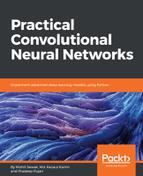One of the most common initialization techniques in training a DNN is random initialization. The idea of using random initialization is just sampling each weight from a normal distribution of the input dataset with low deviation. Well, a low deviation allows you to bias the network towards the simple 0 solutions.
But what does it mean? The thing is that, the initialization can be completed without the bad repercussions of actually initializing the weights to 0. Secondly, Xavier initialization is often used to train CNNs. It is similar to random initialization but often turns out to work much better. Now let me explain the reason for this:
- Imagine that you initialize the network weights randomly but they turn out to start too small. Then the signal shrinks as it passes through each layer until it is too tiny to be useful.
- On the other hand, if the weights in a network start too large, then the signal grows as it passes through each layer until it is too massive to be useful.
The good thing is that using Xavier initialization makes sure the weights are just right, keeping the signal in a reasonable range of values through many layers. In summary, it can automatically determine the scale of initialization based on the number of input and output neurons.
Finally, you may ask an intelligent question, Can't I get rid of the random initialization while training a regular DNN (for example, MLP or DBN)? Well, recently, some researchers have been talking about random orthogonal matrix initializations that perform better than just any random initialization for training DNNs:
- When it comes to initializing the biases, it is possible and common to initialize the biases to be zero since the asymmetry breaking is provided by the small random numbers in the weights. Setting the biases to a small constant value such as 0.01 for all biases ensures that all ReLU units can propagate some gradient. However, it neither performs well nor does consistent improvement. Therefore, sticking with zero is recommended.
